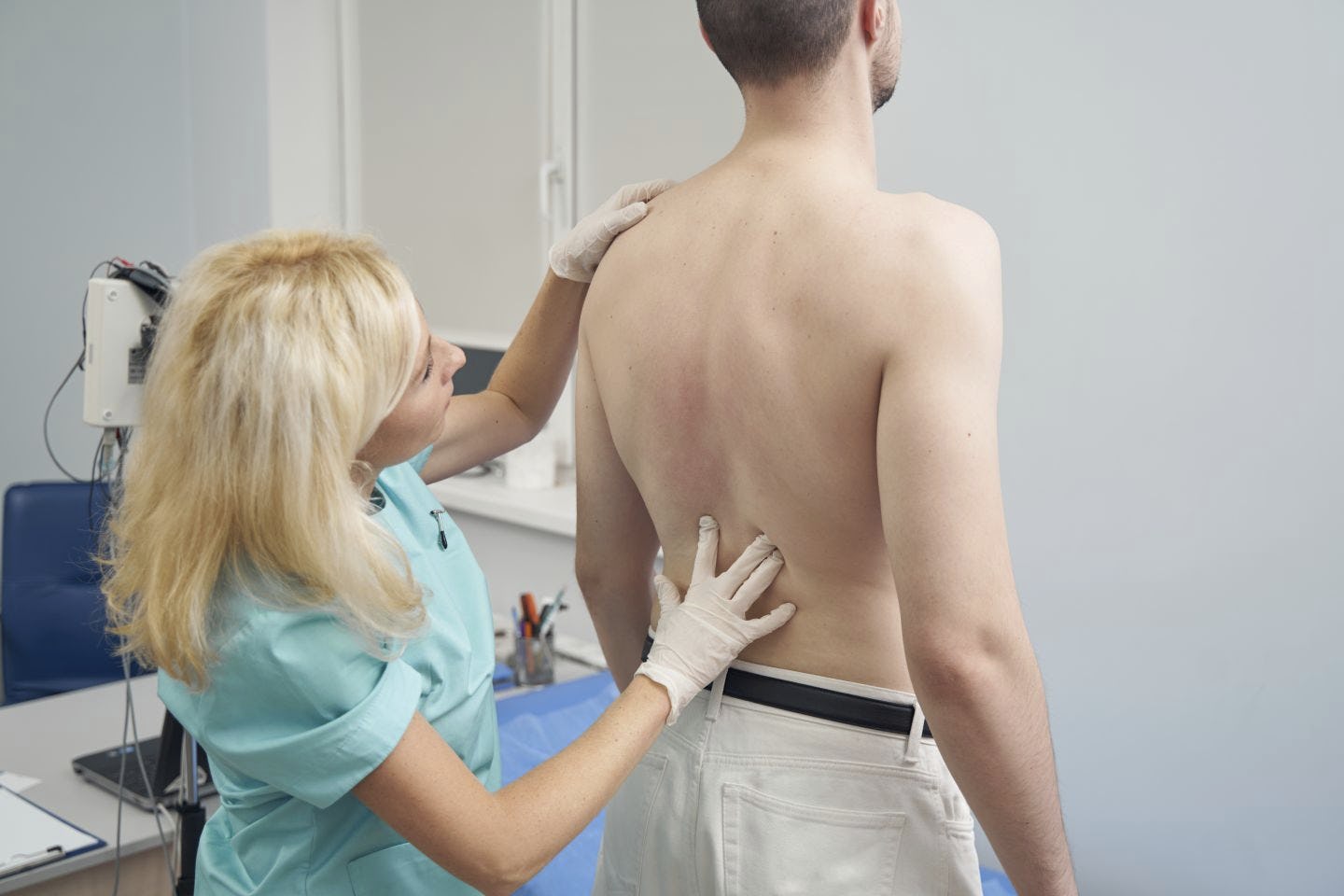Physical therapy for scoliosis aims to manage pain, improve posture, increase mobility, and strengthen muscles to support the spine. The treatment plan may vary based on the severity of the scoliosis, the age of the patient, and individual needs. Here are some common components of physical therapy for scoliosis:
- Assessment and Education: The physical therapist will conduct a thorough assessment to evaluate the curvature of the spine, assess posture, muscle strength, and flexibility, and understand the patient’s goals and concerns. Education about scoliosis, its effects on the body, and the importance of exercise and posture will also be provided.
- Postural Training: Focus on postural awareness and correction techniques to help the patient maintain proper alignment and reduce asymmetrical loading on the spine. This may involve exercises, stretches, and cues to encourage optimal posture during daily activities.
- Stretching Exercises: Targeted stretching exercises to improve flexibility in tight muscles and joints, particularly those surrounding the spine, hips, and shoulders. Stretching can help alleviate muscle tension and improve range of motion, reducing discomfort associated with scoliosis.
- Strengthening Exercises: Emphasis on strengthening the muscles that support the spine, including the back extensors, abdominals, and muscles around the hips and shoulders. Strengthening these muscles can help stabilize the spine and improve overall posture. Exercises may include core strengthening exercises, resistance training, and functional movements tailored to the individual’s needs.
- Manual Therapy: Hands-on techniques such as soft tissue mobilization, myofascial release, and joint mobilizations may be used to improve mobility, reduce muscle tension, and address any restrictions in movement.
- Functional Training: Integrating exercises and activities that mimic daily movements and functional tasks can help improve strength, coordination, and balance, enhancing overall function and quality of life.
- Pain Management:Utilizing modalities such as heat, ice, electrical stimulation, or ultrasound to help alleviate pain and discomfort associated with scoliosis.
- Home Exercise Program: Prescribing a personalized home exercise program to reinforce the benefits of therapy and promote ongoing progress outside of scheduled sessions.
It’s important to work closely with a physical therapist experienced in treating scoliosis to develop a tailored treatment plan that addresses individual needs and goals. Consistency with prescribed exercises and ongoing monitoring can help manage symptoms and optimize function and quality of life for individuals with scoliosis. In some cases, physical therapy may be part of a multidisciplinary approach that includes orthopedic interventions, bracing, or surgical options, depending on the severity and progression of the scoliosis.

